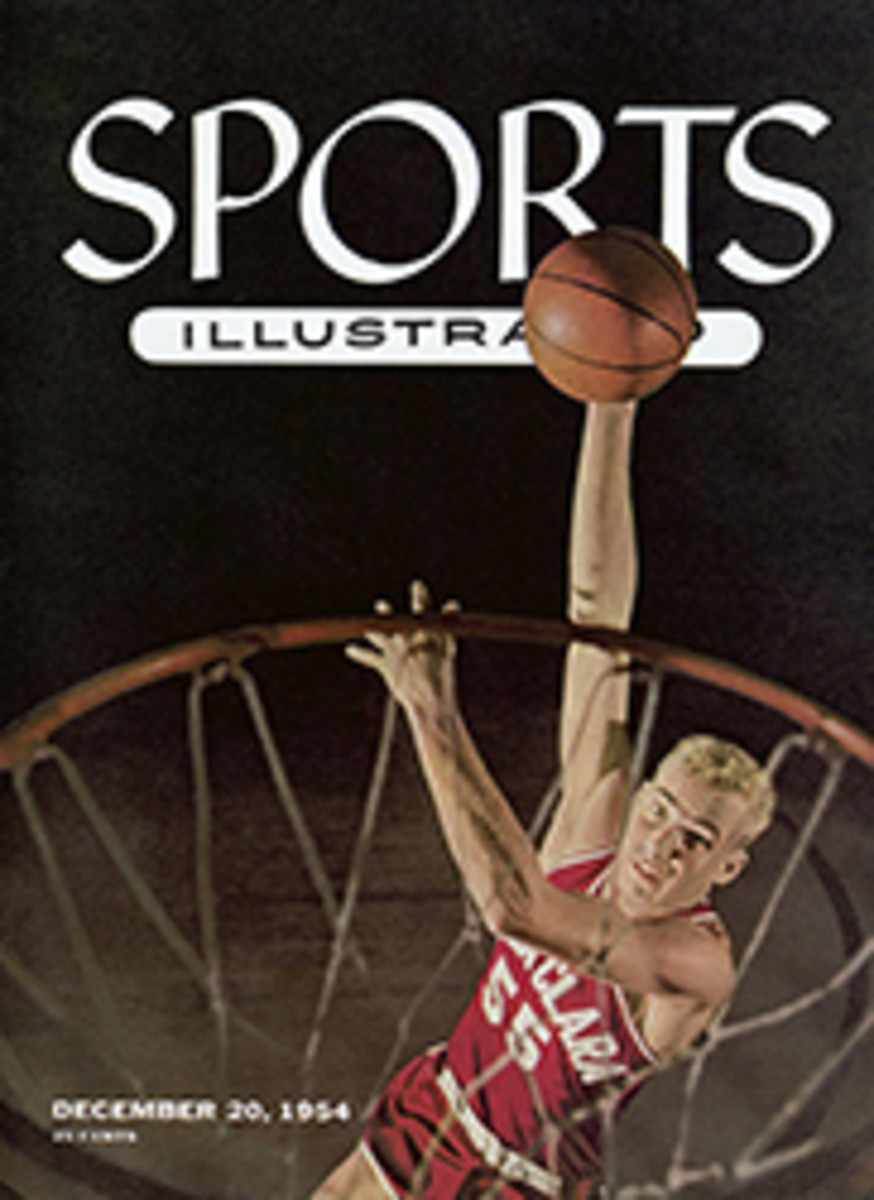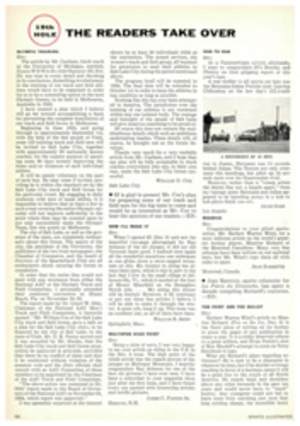
TIP FROM THE TOP
GOLF LESSONS FROM LEADING PROS
With this issue SI launches a new weekly feature, Tip from the Top, a column devoted to golf instruction. This series will be conducted each week by a guest professional, sometimes by a top professional golfer like Gene Sarazen who is known principally for his performances in competition, at other times by a top golf professional, a home-club fixture with no national standing as a player but with a reputation in his region as a sound and gifted teacher—a man like Joe Belfore of the Country Club of Detroit, for example.
The editors of SI are fairly well convinced that large doses of golf theory are hard for the average golfer to digest—particularly in written form when no pro is standing by in person to check the individual golfer's reaction to involved abstract analysis. Accordingly, the emphasis in this series will be placed on presenting a brief, practical, pictorially elaborated tip each week. There is no guarantee whatsoever that by following any or all of the tips a golfer will overnight chop seven strokes off his score or transform his old grooved lunge into mobile music. The chances are, however, that the discerning golfer will gain a great deal from this series if he practices those tips which apply to his own game. In other words, if you are a bad putter, Gene Sarazen's tip is indeed worth your examination and experimentation. If you are a good putter—leave well enough alone.
There is, of course, no one correct way to play golf. The different guest professionals will not be advocating one completely interrelated method or style. What we have asked each of them to do is to present an incisive tip which he has learned from his own experience to be of fundamental importance. In the coming weeks, Tommy Armour, perhaps the most famous (and certainly the most fiscally eminent) of all golf teachers, will discuss the yoking of the hands at the top of the backswing; Claude Harmon, lining up the grip in conjunction with the clubhead; Mike Turnesa, the relaxed address; and so on.... Come to think of it, there is no reason why this series shouldn't take a few strokes off your game.
The basic principle of good putting is to keep the blade of the putter square to the hole. When you talk turkey with a businessman, you must look squarely at him during the entire conversation. It's the same in putting. When you're talking turkey on the greens, the face of your putter must look squarely at the hole throughout the stroke.
Most of the time, when a golfer fails to take the putter back square to the target, the error he makes is "breaking" his wrists. This causes him to pull the putter off the line and eventually to cut the putt off to the right or yank it to the left of the hole. To correct this habit of breaking the wrists, I suggest placing the index finger of the right hand so that it extends directly down the shaft—behind the shaft. You can't break your wrists then, and the finger also serves as a fine guide in making the stroke.
I call this the "after-40 finger," since it has been especially helpful in improving the putting of my friends who are getting along in years, but I recommend it to golfers of all ages who are erratic on the green.
GENE SARAZEN, U.S. Open Champion 1922 and 1932
TWO PHOTOS
ILLUSTRATION
ILLUSTRATION
The after-40 fingers
NEXT WEEK'S GUEST PRO: TOMMY ARMOUR ON CHECKING THE HANDS

